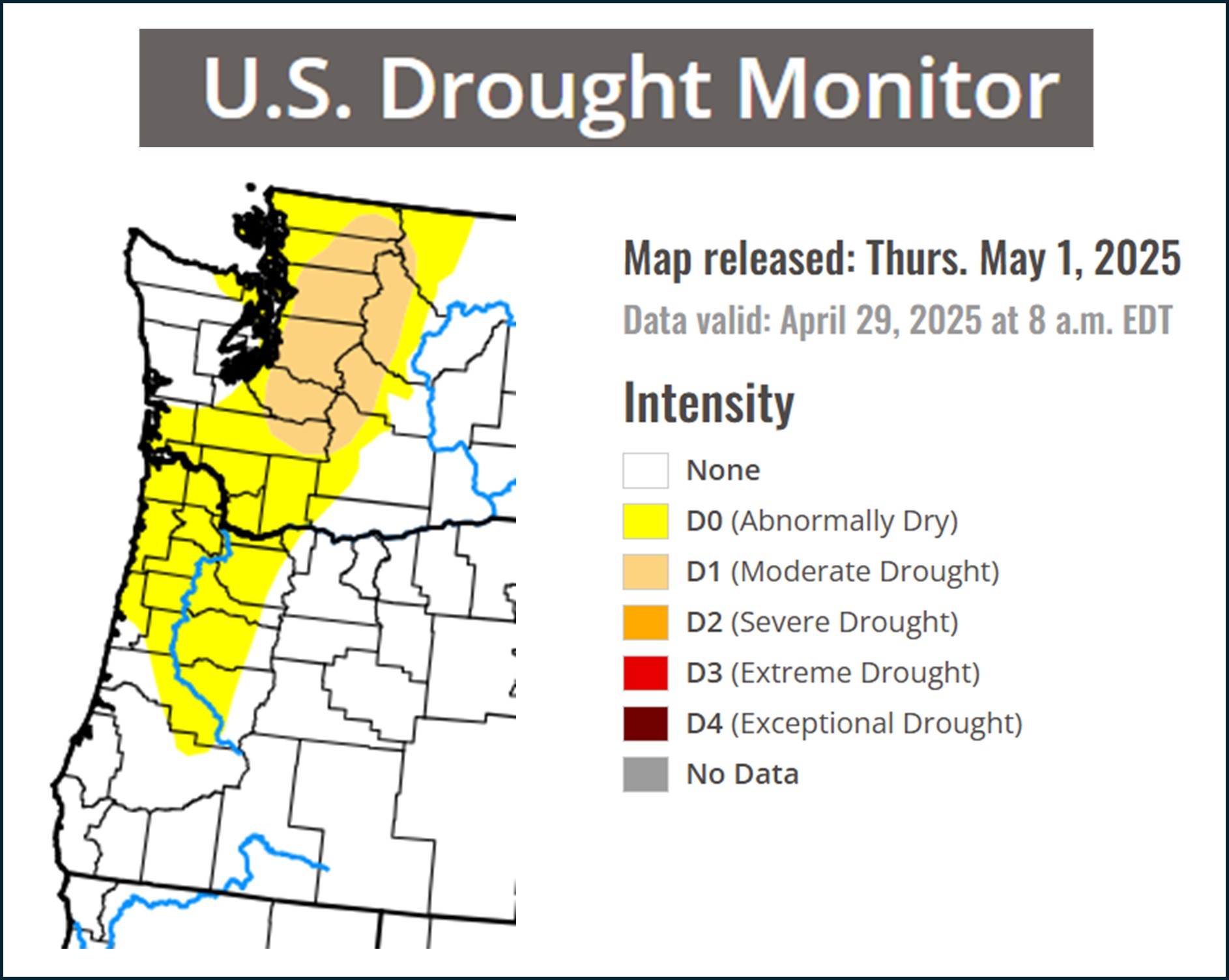The weather in the Pacific Northwest the last few months has been nice for working outside, but unfortunately it’s partly because we’re in a moderate drought.
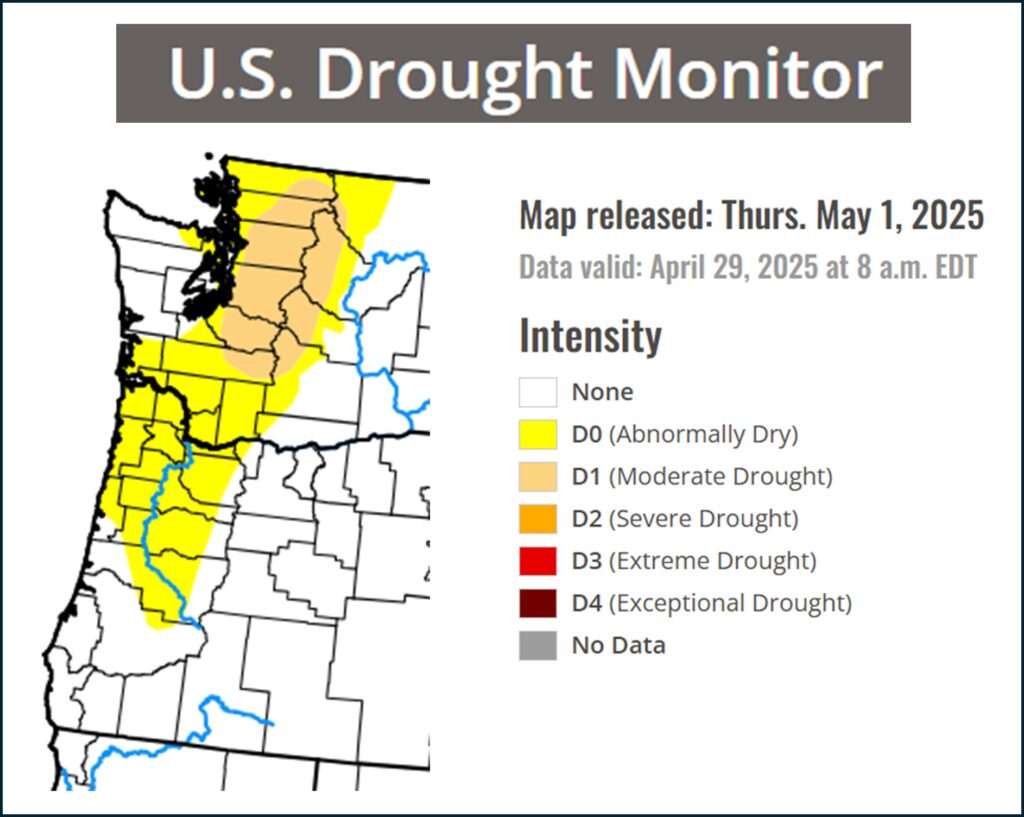
Precipitation Since October 2024
What is usually our wet season has seen significantly less precipitation than “normal” every month since October of last year. The worst month was January, which had only 15% of the normal precipitation and over 3 inches less rain than average.
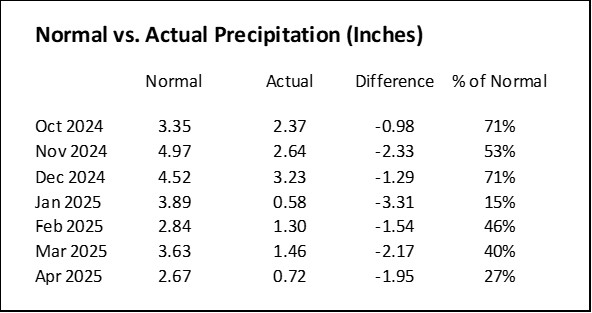
Accumulated Precipitation
The accumulated precipitation since October has been less than half of normal, about 12 inches instead of 26. That’s 14 inches of precipitation that has not fallen, leaving the ground far less saturated than desired.
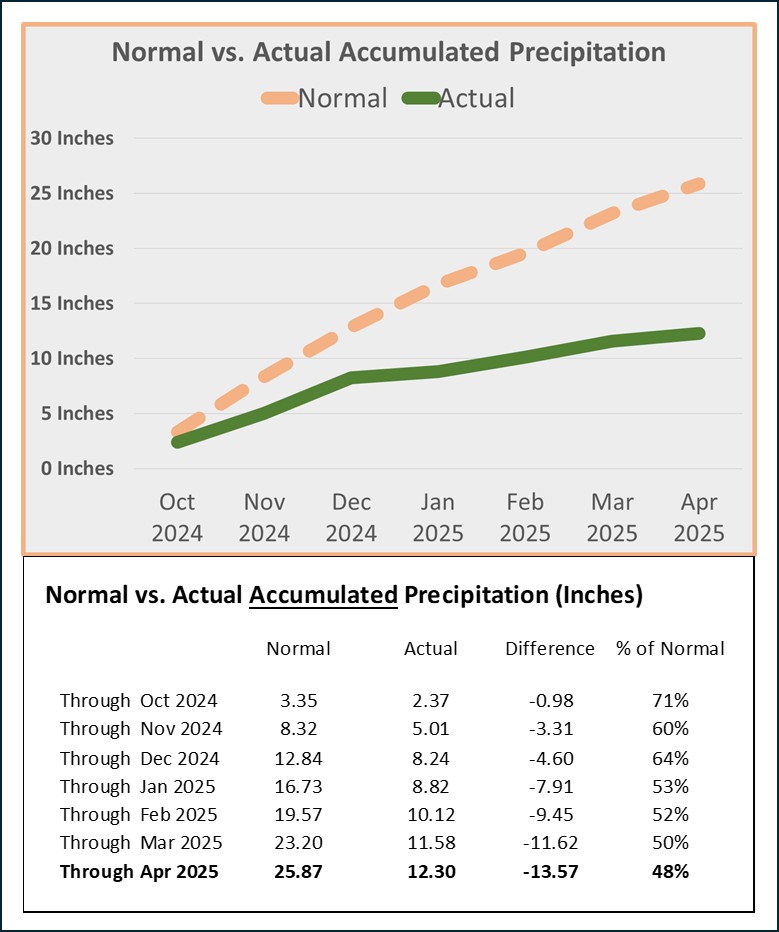
Looking back further, from January 2020 until August 2022 the accumulated precipitation was slightly above normal, but beginning in September 2022 we began to fall behind.
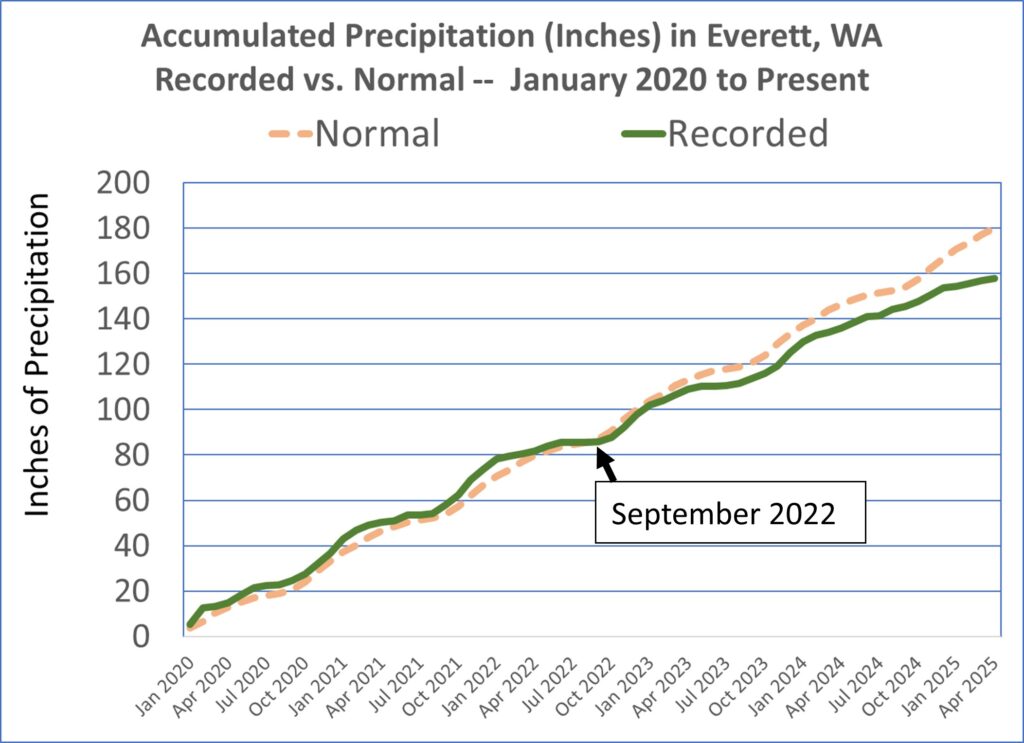
Since September of 2022 the accumulated precipitation has been only 24% of normal, 72 inches instead of the average 94 for that time period.

Meanwhile, average monthly temperatures have been close to normal, only slightly higher in four summers and slightly colder in some winters.
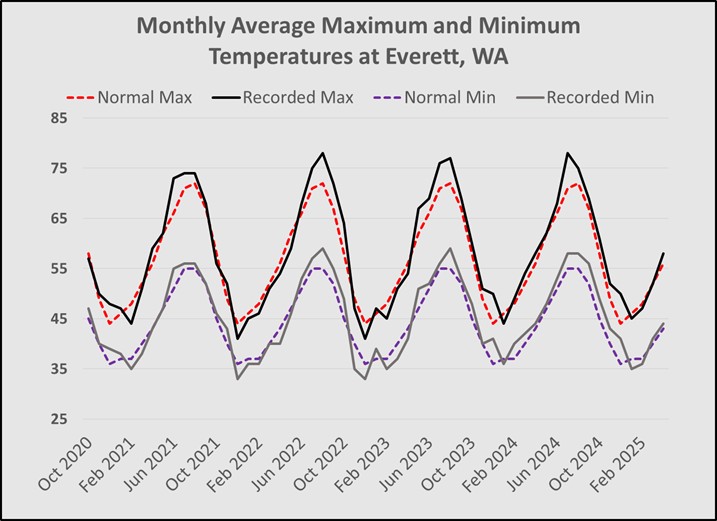
National Climate Assessments for the Northwestern United States
This drought was not unexpected. The Fourth National Climate Assessment states that for the Northwest, “Average winter precipitation is expected to increase over the long term, but year-to-year variability in precipitation is also projected to increase. Years of abnormally low precipitation and extended drought conditions are expected to occur throughout the century, and extreme events, like heavy rainfall associated with atmospheric rivers, are also anticipated to occur more often. (my emphasis added)
Extended drought conditions as well as longer and hotter dry seasons will affect the composition of our forests. The Fifth National Climate Assessment for the Northwest forecasts that with very high confidence, “Ecosystems are expected to change as the climate continues to change and as the magnitude and frequency of extreme events increases.”
What Does This Mean for Backyard Forest Restoration?
In the short term, if we can afford high water bills, we can increase the irrigation of our new plantings through the long dry seasons ahead, and probably the 2026 and 2027 dry seasons as well. In the medium term, we will likely see more trees die, especially Western redcedar, Western Hemlock, and Bigleaf maple growing on drier terrain like ridge tops and steep slopes. In the long term, we may need to learn more about rewilding, since realistically it is not going to be possible to “restore” our backyard forests to some idealized previous state of ecological equilibrium.
